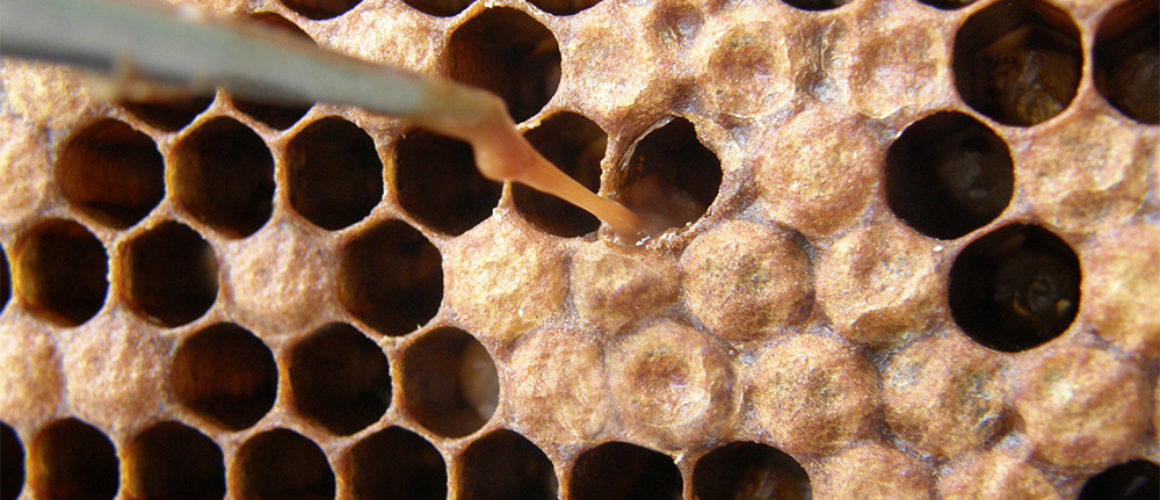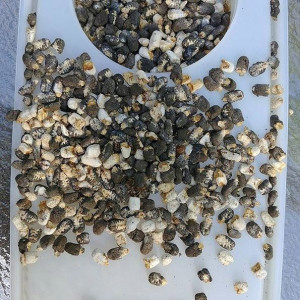American Foulbrood
American foulbrood is a destructive disease affecting honeybees in North America. Your hives need to be monitored for this disease at all times. This diease spreads when larvae becomes infected by ingesting spores from their food. The larvae will eventually die from the disease.
How America Foulbrood Spreads

American foulbrood is highly contagious and easy to spread within a hive and subsequently the apiary. The disease can rapidly spread throughout an infected hive because the nectar stored in infected cells will also become contaminated. As the nectar is moved, each cell that comes into contact with it becomes contaminated. It can be spread to other hives from drifting bees, robbing, or even sharing contaminated bee equipment. If a contaminated hive or equipment is moved to a healthy yard, it can also contaminate the healthy yard as well. This might occur before the beekeeper is even aware of an AFB issue.
Symptoms
American foulbrood symptoms include:
- A spotty brood patch
- The cappings of the sealed brood may have holes in it and appear dark and sunken
- Brown ‘coffee coloured’ larvae inside the cells
Overall, it’s easy to see the difference between healthy brood and AFB diseased hives but testing must be done to confirm.
Treatment
Treating American foulbrood has been done but isn’t practical at this time. The best way is to destroy (burn) the bees and all equipment that have come into contact with the disease. It is possible to wax dip your equipment to kill the AFB spores and some beekeepers routinely wax dip their equipment as a precaution.
Prevention
In Manitoba, a preventative treatment of Oxytetracycline can be applied in spring or fall. In spring, it must be done at least 4 weeks before the start of honey production. Treatment is done by spreading the treatment across the outside part of the frames. Overwintered colonies should receive 2 tablespoons of oxytetracycline/icing sugar mixture per colony per application. Three applications are required 4-5 days apart. Spring packages receive 1 tablespoon per application and also receive 3 applications 4-5 days apart.
Final Thoughts
We have been very fortunate and have never had a single case of this disease in our Apiaries. Using precautions can help protect against this disease and prevent large losses from occurring.
If you are purchasing used beekeeping equipment, you should check if AFB issues have ever been a concern in the apiary. It would be worthwhile considering purchasing used equipment with recent exposure.


